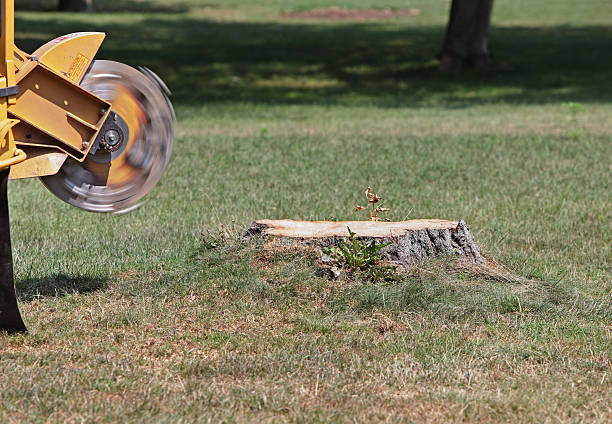Tree stump removal is an essential aspect of landscape maintenance and can significantly enhance the appearance and usability of your outdoor space. Whether you’re dealing with an unsightly stump after a tree has been felled or planning to redesign your garden, understanding the various methods of stump removal in San Jose CA can help you choose the best option for your needs.
Why Remove Tree Stumps?
Safety Concerns
Tree stumps can pose a safety hazard, especially in yards where children play or where people walk frequently. Stumbling over a hidden stump can lead to injuries, making it essential to remove them.
Aesthetic Improvement
An unsightly stump can detract from the beauty of your landscape. Removing it allows for a more visually appealing garden space, paving the way for new plantings or features.
Preventing Pests
Stumps can attract pests like termites, ants, and beetles, which can spread to healthy trees and plants nearby. Removing stumps helps prevent these pests from invading your yard.
Space Utilization
If you want to expand your garden or create new landscaping features, removing stumps is crucial for utilizing the available space effectively.
Methods for Tree Stump Removal
Manual Removal
Manual stump removal involves physically digging out the stump using tools such as shovels, axes, and saws. This method is labor-intensive and time-consuming but can be effective for smaller stumps.
- Cut the stump as close to the ground as possible.
- Dig around the stump to expose the roots.
- Use a saw or axe to cut through the roots.
- Pull the stump out of the ground using a lever or pry bar.
Stump Grinding
Stump grinding is a popular method for removing larger stumps. This technique uses a specialized machine to grind the stump down into mulch.
- Rent or hire a stump grinder.
- Position the grinder over the stump.
- Grind the stump down until it is about 4-6 inches below ground level.
- Use the mulch generated to fill the hole or as garden bedding.
Chemical Removal
Using chemicals can speed up the decomposition of the stump. However, this method can take several weeks or even months.
- Drill several holes into the top of the stump.
- Apply a chemical stump remover, following the manufacturer’s instructions.
- Cover the stump with a tarp to retain moisture.
- After several weeks, the stump will become softer and easier to remove.
Burning
If local regulations permit, burning the stump can be an effective removal method. This technique is quicker but requires caution.
- Ensure the stump is dry.
- Cut the stump to ground level.
- Use an accelerant (if safe and legal) to ignite the stump.
- Monitor the fire until the stump is completely burned down.
Post-Removal Considerations
Filling the Hole
After stump removal, filling the hole is essential to maintain a level landscape. You can use topsoil, mulch, or a mixture of both to fill the cavity left by the stump.
Replanting
Once the stump is removed and the area is leveled, you may choose to replant in that spot. Ensure the soil is prepared adequately for the new plants or trees.
Landscape Redesign
Removing a stump opens up opportunities for redesigning your landscape. Consider adding new plants, flower beds, or even a small patio area where the stump once stood.
DIY vs. Professional Removal
DIY Removal
If you are experienced with tools and have the time and energy, you may opt for a DIY approach. However, ensure you have the necessary tools and take all safety precautions.
Professional Services
For larger stumps or if you’re uncomfortable with the process, hiring a professional tree service is recommended. They have the expertise and equipment to remove stumps safely and efficiently.
FAQs
How much does tree stump removal cost?
The cost varies based on the stump’s size and location, but it typically ranges from $75 to $300. Professional services may charge extra for larger or multiple stumps.
Can I remove a tree stump myself?
Yes, if you have the right tools and physical capability. However, it can be labor-intensive, and professional help might be more efficient for larger stumps.
How long does it take for a stump to decompose naturally?
Natural decomposition can take several years, depending on the stump’s size and environmental conditions. Using chemicals can speed up the process.
What can I do with the stump after removal?
After removal, you can fill the hole with soil or mulch, replant in the area, or use the stump as a decorative feature, such as a rustic garden table.
Is stump grinding better than removal?
Stump grinding is often preferred for larger stumps because it is less labor-intensive and quicker than full removal. However, it leaves the roots underground.
Conclusion
Best tree stump removal is an important task that enhances safety, aesthetics, and the overall health of your landscape. Whether you choose to tackle the job yourself or hire a professional, understanding your options will help you make an informed decision. By investing in stump removal, you can transform your outdoor space into a safer, more beautiful environment for all to enjoy.Top of Form
